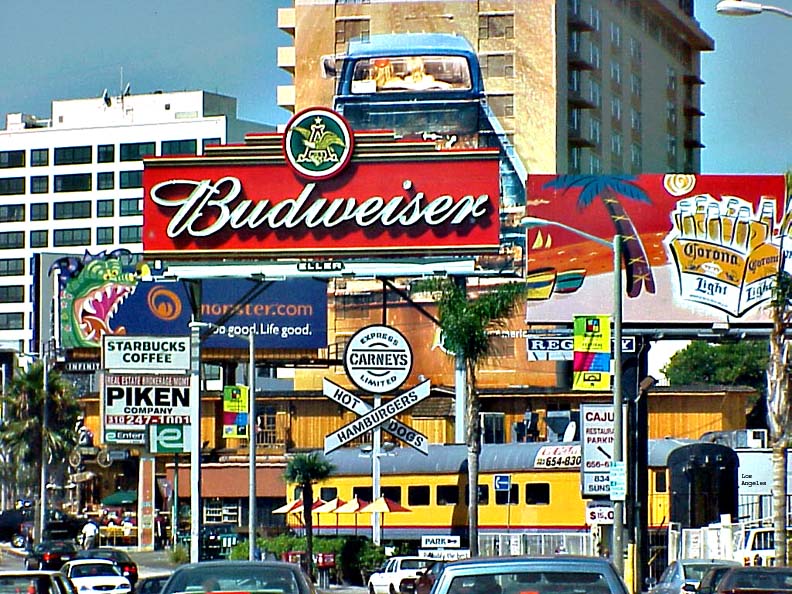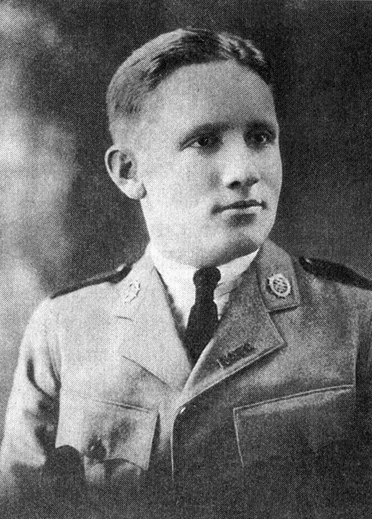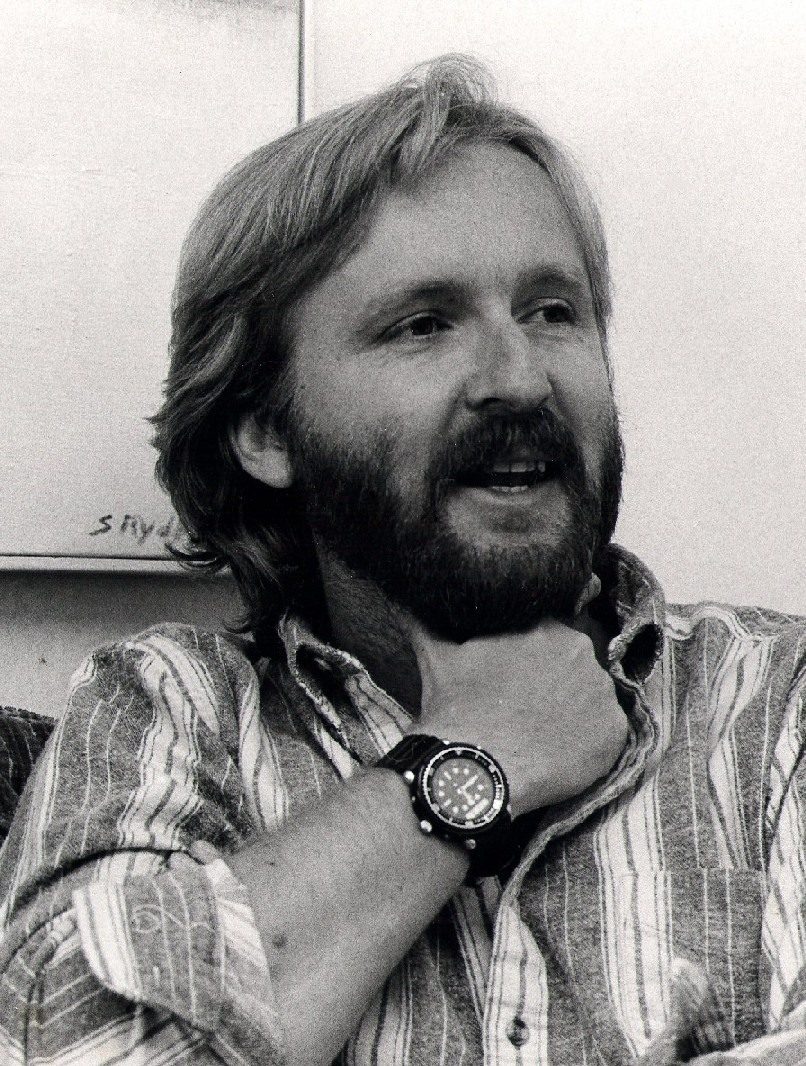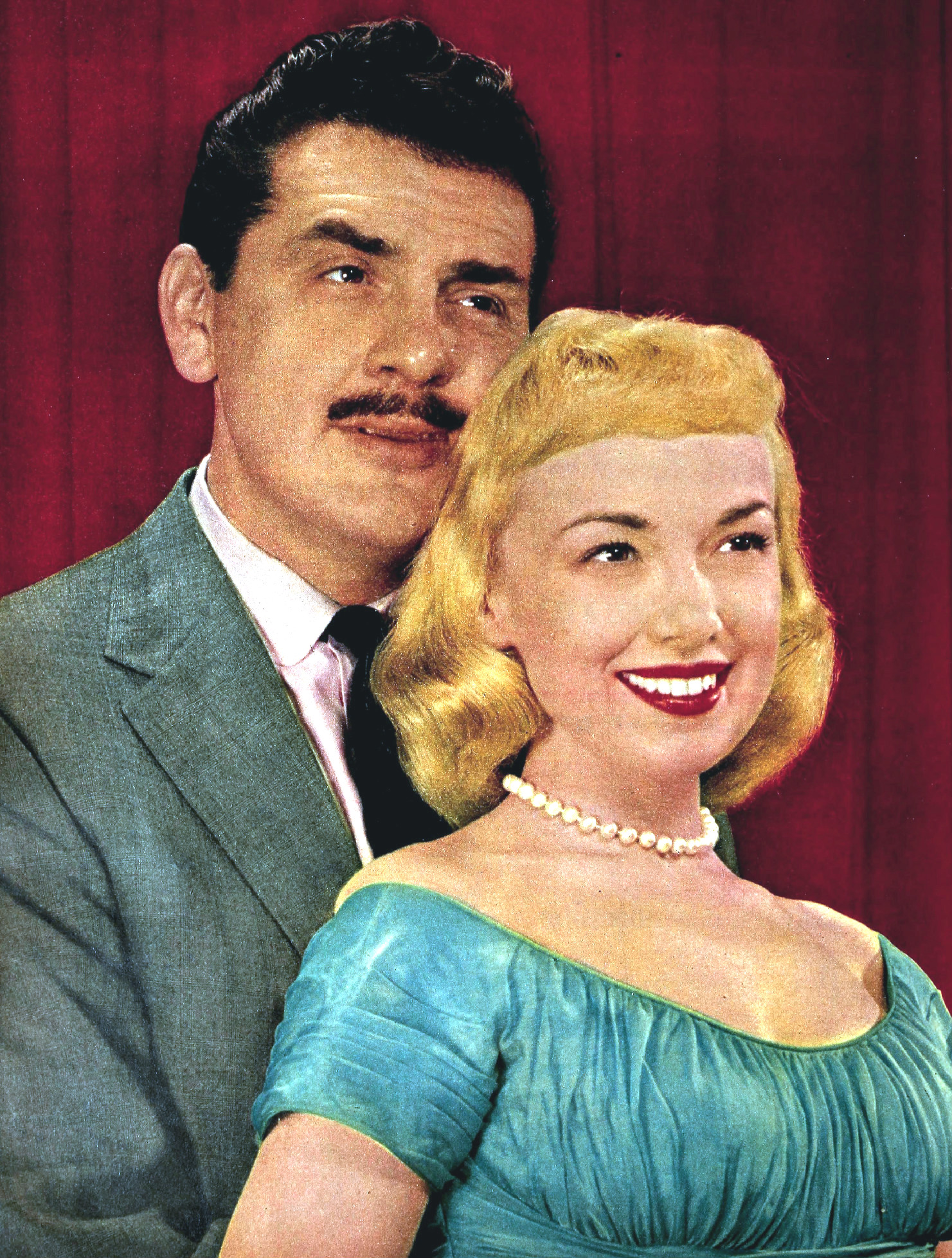|
Cinerama Dome
Pacific Theatres' Cinerama Dome is a movie theater located at 6360 Sunset Boulevard in Hollywood, California. Designed to exhibit widescreen Cinerama films, it opened November 7, 1963. The original developer was William R. Forman, founder of Pacific Theatres. The Cinerama dome continued as a leading first-run theater, most recently as part of the ArcLight Hollywood complex, until it closed temporarily in March 2020, due to the COVID-19 pandemic in California. The Arclight chain closed permanently in April 2021, with the theater never having reopened. In June 2022, it was announced that there are plans to reopen under the new name, Cinerama Hollywood. History In February 1963, Cinerama Inc. unveiled a radically new design for theaters that would show its movies. They would be based on the geodesic dome developed by R. Buckminster Fuller, would cost half as much as conventional theaters of comparable size, and could be built in half the time. Cinerama's goal was to see at lea ... [...More Info...] [...Related Items...] OR: [Wikipedia] [Google] [Baidu] |
Sunset Boulevard
Sunset Boulevard is a boulevard in the central and western part of Los Angeles, California, that stretches from the Pacific Coast Highway in Pacific Palisades east to Figueroa Street in Downtown Los Angeles. It is a major thoroughfare in the cities of Beverly Hills and West Hollywood (including a portion known as the Sunset Strip), as well as several districts in Los Angeles. Geography Approximately in length, the boulevard roughly traces the arc of mountains that form part of the northern boundary of the Los Angeles Basin, following the path of a 1780s cattle trail from the Pueblo de Los Angeles to the ocean. From Downtown Los Angeles, the boulevard heads northwest, to Hollywood, through which it travels due west for several miles before it bends southwest towards the ocean. It passes through or near Echo Park, Silver Lake, Los Feliz, Hollywood, West Hollywood, Beverly Hills, and Holmby Hills. In Bel-Air, Sunset Boulevard runs along the northern boundary of UCLA ... [...More Info...] [...Related Items...] OR: [Wikipedia] [Google] [Baidu] |
Spencer Tracy
Spencer Bonaventure Tracy (April 5, 1900 – June 10, 1967) was an American actor. He was known for his natural performing style and versatility. One of the major stars of Hollywood's Golden Age, Tracy was the first actor to win two consecutive Academy Awards for Best Actor from nine nominations. During his career, he appeared in 75 films and developed a reputation among his peers as one of the screen's greatest actors. In 1999, the American Film Institute ranked Tracy as the 9th greatest male star of Classic Hollywood Cinema. Tracy first discovered his talent for acting while attending Ripon College, and he later received a scholarship for the American Academy of Dramatic Arts. He spent seven years in the theatre, working in a succession of stock companies and intermittently on Broadway. His breakthrough came in 1930, when his lead performance in ''The Last Mile'' caught the attention of Hollywood. After a successful film debut in John Ford's ''Up the River'' (in ... [...More Info...] [...Related Items...] OR: [Wikipedia] [Google] [Baidu] |
Avatar (2009 Film)
''Avatar'' (also marketed as ''James Cameron's Avatar'') is a 2009 epic science fiction film directed, written, co-produced and co-edited by James Cameron, and starring Sam Worthington, Zoe Saldana, Stephen Lang, Michelle Rodriguez, and Sigourney Weaver. It is set in the mid-22nd century when humans are colonizing Pandora, a lush habitable moon of a gas giant in the Alpha Centauri star system, in order to mine the valuable mineral unobtanium. The expansion of the mining colony threatens the continued existence of a local tribe of Na'vi – a humanoid species indigenous to Pandora. The title of the film refers to a genetically engineered Na'vi body operated from the brain of a remotely located human that is used to interact with the natives of Pandora. Development of ''Avatar'' began in 1994, when James Cameron wrote an 80-page treatment for the film. Filming was supposed to take place after the completion of Cameron's 1997 film '' Titanic'', for a planned releas ... [...More Info...] [...Related Items...] OR: [Wikipedia] [Google] [Baidu] |
James Cameron
James Francis Cameron (born August 16, 1954) is a Canadian filmmaker. A major figure in the post- New Hollywood era, he is considered one of the industry's most innovative filmmakers, regularly pushing the boundaries of cinematic capability with his use of novel technologies. He first gained recognition for writing and directing '' The Terminator'' (1984) and found further success with ''Aliens'' (1986), '' The Abyss'' (1989), '' Terminator 2: Judgment Day'' (1991), and the action comedy ''True Lies'' (1994). He wrote and directed ''Titanic'' (1997) and ''Avatar'' (2009), with ''Titanic'' earning him Academy Awards for Best Picture, Best Director and Best Film Editing. A recipient of various other industry accolades, two of his films have been selected for preservation in the National Film Registry by the Library of Congress. Cameron co-founded the production companies Lightstorm Entertainment, Digital Domain, and Earthship Productions. In addition to filmmaking, he is ... [...More Info...] [...Related Items...] OR: [Wikipedia] [Google] [Baidu] |
Episode III – Revenge Of The Sith
An episode is a narrative unit within a larger dramatic work or documentary production, such as a series intended for radio, television or streaming consumption. The noun ''episode'' is derived from the Greek term ''epeisodion'' (), meaning the material contained between two songs or odes in a Greek tragedy. It is abbreviated as '' ep'' (''plural'' eps). An episode is also a narrative unit within a ''continuous'' larger dramatic work. It is frequently used to describe units of television or radio series that are broadcast separately in order to form one longer series. An episode is to a sequence as a chapter is to a book. Modern series episodes typically last 20 to 50 minutes in length. The noun ''episode'' can also refer to a part of a subject, such as an “episode of life” or an “episode of drama”. See also * List of most-watched television episodes This page lists the television broadcasts which had the most viewers within individual countries, as measured b ... [...More Info...] [...Related Items...] OR: [Wikipedia] [Google] [Baidu] |
Digital Cinema
Digital cinema refers to adoption of digital technology within the film industry to distribute or project motion pictures as opposed to the historical use of reels of motion picture film, such as 35 mm film. Whereas film reels have to be shipped to movie theaters, a digital movie can be distributed to cinemas in a number of ways: over the Internet or dedicated satellite links, or by sending hard drives or optical discs such as Blu-ray discs. Digital movies are projected using a digital video projector instead of a film projector, are shot using digital movie cameras and edited using a non-linear editing system (NLE). The NLE is often a video editing application installed in one or more computers that may be networked to access the original footage from a remote server, share or gain access to computing resources for rendering the final video, and to allow several editors to work on the same timeline or project. Alternatively a digital movie could be a film reel that has b ... [...More Info...] [...Related Items...] OR: [Wikipedia] [Google] [Baidu] |
Hollywood Boulevard
Hollywood Boulevard is a major east–west street in Los Angeles, California. It begins in the east at Sunset Boulevard in the Los Feliz district and proceeds to the west as a major thoroughfare through Little Armenia and Thai Town, Hollywood. After crossing Fairfax Avenue, Hollywood Boulevard ends at a stop sign, at Laurel Canyon Drive, and continues northbound, as a winding residential street, going up in the hills and canyons in the Hollywood Hills West district. Parts of the boulevard are popular tourist destinations, primarily the fifteen blocks between Gower Street west to La Brea Avenue where the Hollywood Walk of Fame is located. The heart of Hollywood Boulevard is the crossing of Hollywood Boulevard and Highland avenue. "Hollywood and Highland" is the exit to Hollywood via the 101 freeway, and the station when exiting the bus or metro red lines. History 1890s to 1910 Part of today's Hollywood Boulevard was called Prospect Avenue, a dusty road that ran through H ... [...More Info...] [...Related Items...] OR: [Wikipedia] [Google] [Baidu] |
Ultra Panavision 70
Ultra Panavision 70 and MGM Camera 65 were, from 1957 to 1966, the marketing brands that identified motion pictures photographed with Panavision's anamorphic movie camera lenses on 65 mm film. Ultra Panavision 70 and MGM Camera 65 were shot at 24 frames per second (fps) using anamorphic camera lenses. Ultra Panavision 70 and MGM Camera 65's anamorphic lenses compressed the image 1.25 times, yielding an extremely wide aspect ratio of 2.76:1 (when a 70 mm projection print was used). Ultra Panavision saw much less use than its sibling, the more popular Super Panavision 70, and was only used on ten films from 1957 to 1966. However, nearly fifty years later, Robert Richardson famously resurrected Ultra Panavision 70 after the lens test he came to do at the Panavision headquarters for the upcoming project with Quentin Tarantino, where he discovered that the lenses and equipment were still intact. Tarantino was fascinated by this and was able to refurbish the lenses for use in his nex ... [...More Info...] [...Related Items...] OR: [Wikipedia] [Google] [Baidu] |
Stanley Kramer
Stanley Earl Kramer (September 29, 1913February 19, 2001) was an American film director and producer, responsible for making many of Hollywood's most famous "message picture, message films" (he would call his movies ''heavy dramas'') and a liberal movie icon.Film-maker Stanley Kramer dies a February 2001 BBC obituary As an independent producer and director, he brought attention to topical social issues that most studios avoided. Among the subjects covered in his films were racism (in ''The Defiant Ones'' and ''Guess Who's Coming to Dinner''), nuclear war (in ''On the Beach (1959 film), On the Beach''), greed (in ''It's a Mad, Mad, Mad, Mad World''), creationism vs. evolution (in ''Inherit the Wind (1960 film), Inherit the Wind'') and the causes and effects of fascism (in ''Judgment at Nuremberg''). His other films ... [...More Info...] [...Related Items...] OR: [Wikipedia] [Google] [Baidu] |
70 Mm Film
70 mm film (or 65 mm film) is a wide high-resolution film gauge for motion picture photography, with a negative area nearly 3.5 times as large as the standard 35 mm motion picture film format. As used in cameras, the film is wide. For projection, the original 65 mm film is printed on film. The additional 5 mm contains the four magnetic strips, holding six tracks of stereophonic sound. Although later 70 mm prints use digital sound encoding (specifically the DTS format), the vast majority of existing and surviving 70 mm prints pre-date this technology. Each frame is five perforations tall, with an aspect ratio of 2.2:1. However, the use of anamorphic Ultra Panavision 70 lenses squeezes the image into an ultra-wide 2.76:1 aspect ratio. To this day, Ultra Panavision 70 produces the widest picture size in the history of filmmaking; surpassed only by Polyvision, which was only used for 1927's Napoleon. With regard to exhibition, 70 mm fil ... [...More Info...] [...Related Items...] OR: [Wikipedia] [Google] [Baidu] |
Dorothy Provine
Dorothy Michelle Provine (January 20, 1935 – April 25, 2010) was an American singer, dancer and actress. Born in 1935 in Deadwood, South Dakota, she grew up in Seattle, Washington, and was hired in 1958 by Warner Bros., after which she first starred in '' The Bonnie Parker Story'' and played many roles in TV series. During the 1960s, Provine starred in series such as '' The Alaskans'' and '' The Roaring Twenties,'' and her major roles in movies included ''It's a Mad, Mad, Mad, Mad World'' (1963), '' Good Neighbor Sam'' (1964) with Jack Lemmon, '' That Darn Cat!'' (1965), '' Kiss the Girls and Make Them Die'' (1966), '' Who's Minding the Mint?'' (1967), and '' Never a Dull Moment'' (1968) with Dick Van Dyke and Edward G. Robinson. In 1968, Provine married the film and television director Robert Day and mostly retired. She died of emphysema on April 25, 2010 in Bremerton, Washington. Early life and career Provine was born in Deadwood in southwestern South Dakota, to Wi ... [...More Info...] [...Related Items...] OR: [Wikipedia] [Google] [Baidu] |
Edie Adams
Edie Adams (born Edith Elizabeth Enke; April 16, 1927 – October 15, 2008) was an American comedian, actress, singer and businesswoman. She earned the Tony Award and was nominated for an Emmy Award. Adams was well known for her impersonations of sexy stars on stage and television, especially Marilyn Monroe. She was the frequent television partner of Ernie Kovacs, her husband. Adams founded two beauty businesses: Edie Adams Cosmetics and Edie Adams Cut 'n' Curl. Early life Adams was born in Kingston, Pennsylvania, the only daughter of Sheldon Alonzo Enke and his wife, Ada Dorothy (née Adams). She had an elder brother, Sheldon Adams Enke. The family moved to nearby areas such as Shavertown, Pennsylvania, Shavertown and Trucksville, Pennsylvania, Trucksville and spent a year in New York City before settling in Tenafly, New Jersey, where she attended Tenafly High School. Ada Enke taught her daughter singing and piano; mother and daughter were members of the Grove City Presbyteria ... [...More Info...] [...Related Items...] OR: [Wikipedia] [Google] [Baidu] |






.jpg)

